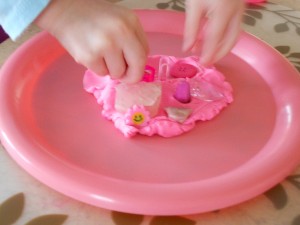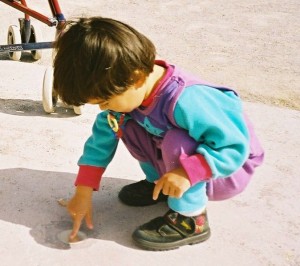Because the early years are so critical for brain development, it’s important for parents and caregivers to promote children’s learning and support their kindergarten readiness. The sense of touch begins before babies are born and young kids seem to touch everything so why do we need to encourage them to touch? Touching, and being touched, forms all kinds of brain connections.

Preschool programs are now including sensory tables where kids can simply explore feeling and touching. At home, putting some water in the kitchen sink and letting your little one fill and pour is a great sensory activity. Toy boxes usually have a variety of things to touch from soft, fuzzy blankets to squishy balls and stuffies to bumpy blocks. Playdough is super fun for all kinds of touching: rolling, squishing, pulling, patting, smooshing, and more. Lots of children’s books include pages of different textures.

From first thing in the morning, help your child notice different textures and how things feel. How does the soap feel? Is it smooth and slippery? What temperature is the water? A toothbrush feels a bit poky; a hairbrush can feel scratchy. How about the towel? Shoes can sometimes feel too tight. How do clothes feel? Around the house, there’s things to feel too: a smooth table, a soft rug, a pokey corner. Not being careful can mean some painful touching. Bumping into things can hurt bodies in many different places.
Outside, are you lucky enough to feel the warm sun? How about the touch of the wind? I don’t mind the feeling of sand on a beach or in a sandbox but I sure don’t like feeling it on the floor. Helping your child develop the sense of touch is important for safety, language development, healthy emotional growth and, of course, kindergarten readiness. The best way to end the day is with some hugs and snuggles. How does that feel?
